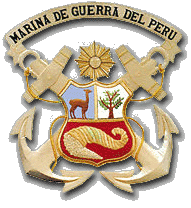

|
THE IRONCLAD "HUASCAR"
The British naval officer and warship designer Captain Cowper Coles (1819-70), impressed by the USS Monitor, was determinated to design a similarly working turreted ironclad warship for the Royal Navy. The result was HMS Captain, a turreted ironclad which entered service with the Royal Navy in 1870. Before her commission the Admiralty was concerned by her low freeboard, and rightly so. On the night of 7 September 1870, the Captain foundered in a squall in the Bay of Biscay, and went down with almost all hands. Those lost included Captain Coles, who was on board to evaluate his design. However, several years before the Captain was launched, Coles designed and built another ironclad. In 1864 he supervised the building of the light ironclad Huascar, which was armed with two main guns, mounted in a revolving turret. The Huascar wasn�t such a radical design as the Captain, which meant that she was much more seaworthy, and a had a much higher freeboard. She entered service with the Peruvian Navy, and for the next 13 years she served as its flagship � the pride of the Peruvian fleet. TECHNICAL DETAILS: The "Huascar" is an iron-clad ram, with a single turret. It was built in England by Laird Bros., at the Birkenhead Iron Works. The following are the principal dimensions:
The armament consists of two Armstrong 12 ton M.L. 10 inch shunt rifled guns mounted in the turret. one 40 pdr. Armstrong M.L.R. on the starboard side of the quarter deck, one of the same size at the stern report, and a light 12 pdr. Armstrong on the port side of the poop. Gatling guns and Remington rifles finish the armament. The hull is divided into five water tight compartments by transverse iron bulk-heads, with water-tight doors. Near the bow is a water-tight collision bulk-head to protect the vessel in case of injury to the ram. The armor plates on the hull, abreast of the turret-chamber, fire and engine rooms, are 4 1/2 inches thick, diminishing from these points to 2 1/2 inches at stem and stern, and are backed by 10 inches of teak and an iron skin of 5/8 inch iron. The turret whose exterior diameter is 22 feet has 5 1/2 inches of iron armor, backed by 13 inches of lead and a 1/2 inch iron skin. The conning tower, hexagonal in shape, was between the turret and smoke-stack. This was plated with 3 inches of armour backed by 8 inches of lead, with an inner skin of two 1/2-inch iron plates. The armor extends 6 inches above the backing. The engines have two horizontal cylinders. The vessel was originally bark rigged, but the main-mast now alone remains. HISTORICAL DETAILS: She is named after the 16th century Incan emperor and was played a significant role in the battle of Pacocha and the Nitrate War against Chile. She fought in Battle of Pacocha on 29 May 1877 with the two unarmoured British ships, the HMSs Shah and Amethyst, of the British Pacific Station under Admiral de Horsey. She fought in Naval Battle of Iquique on 21 May 1879, during the naval stage of the Nitrate War. The battle took place off the Peruvian port of Iquique. The Peruvian ironclad Hu�scar, commanded by Miguel Grau Seminario, sank the Esmeralda, a Chilean wooden corvette captained by Arturo Prat Chac�n, after four hours of combat. Peruvian Ironclad Huascar had made several incursions into Chilean waters until 8 October 1879 (Naval Battle of Angamos).
|